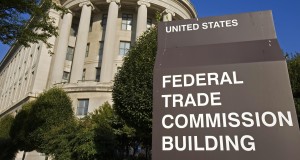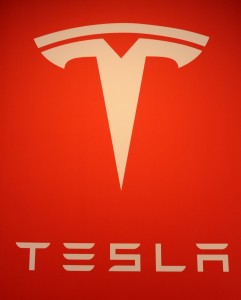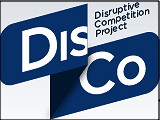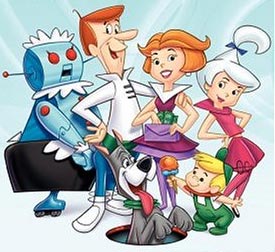A sample text widget
Etiam pulvinar consectetur dolor sed malesuada. Ut convallis
euismod dolor nec pretium. Nunc ut tristique massa.
Nam sodales mi vitae dolor ullamcorper et vulputate enim accumsan.
Morbi orci magna, tincidunt vitae molestie nec, molestie at mi. Nulla nulla lorem,
suscipit in posuere in, interdum non magna.
|
There’s a famous old political adage — “where you stand is where sit” (also known as Miles’ Law) — meaning basically that government policy positions are dictated more by agency imperative and institutional memory than objective consideration of the public interest. A related concept is “regulatory capture,” where administrative agencies over time become defenders of the status quo and pursue objectives more for regulated firms as their constituency than consumers. Capture theory is closely related to the “rent-seeking” and “political failure” theories developed by the public choice school of economics. Or as Harold Demsetz put it well in his influential 1968 article, Why Regulate Utilities?, “in utility industries, regulation has often been sought because of the inconvenience of competition.”
That’s no longer limited to electricity companies and other public utilities these days. With the advent of rapid, low-cost entry into previously sheltered markets, powered by technology and the sharing economy, today’s incumbent industries are taking regulatory capture and politics as rent seeking to new heights. At DisCo we’ve written extensively about Uber, Lyft, Airbnb, Tesla and many other disruptive new start-ups that are facing a backlash from established industries (taxis, hotels and auto dealers, respectively) which use consumer protection as a Trojan Horse to disguise preventing or delaying competition on price, features and service. Politicians in locales as diverse as New York, New Jersey, San Antonio and Seattle (believe it or not!) have, wittingly it seems, gone along so far.

This is where what antitrust lawyers dub competition advocacy comes into play. Most antitrust policy in the U.S. is made in federal court as a result of merger, monopolization and horizontal collusion prosecutions launched by the Department of Justice (DOJ) and the Federal Trade Commission (FTC). But due to our federal-state system and a judge-made doctrine allowing states to exempt some markets from competition despite federal antitrust demands (government action, and private conduct to obtain such action, is challengeable in only relative narrow circumstances), much of the battle takes place in the legislative and regulatory arenas. Accordingly, competition advocacy is the primary tool available to antitrust enforcers in the U.S. to oppose state and local regulations favoring established firms over start-ups and parochially sheltering in-state companies from out-of-state competitors. The result is that for three decades the federal antitrust agencies have engaged in affirmative outreach to state and local legislators and regulators in the form of comments, letters and occasional lawsuits that seek to drive home the basic truths that competition outperforms regulation and the law should not pick winners and losers when it comes to evolving markets. (State attorneys general also undertake competition advocacy, principally through amicus briefs, as well.)
Continue reading Competition Advocacy Matters—Here’s Why and How
Three high-level staffers at the Federal Trade Commission (Andy Gavil, Debbie Feinstein and Marty Gaynorare) are backing Tesla Motors Inc. in its ongoing fight to sell electric cars directly to consumers. As we’ve observed, Tesla forgoes traditional auto dealers in favor of its own retail showrooms. But that business model was recently banned by the New Jersey Motor Vehicle Commission — and is under fire in many other states as well — as a measure supposedly to protect consumers.
 The ubiquitous state laws in question were originally put into place to prevent big automakers from establishing distribution monopolies that crowd out dealerships, which tend to be locally owned and family run. They were intended to promote market competition, in other words. But the FTC officials say they worry (as have we at DisCo) that the laws have instead become protectionist, walling off new innovation. “FTC staff have commented on similar efforts to bar new rivals and new business models in industries as varied as wine sales, taxis, and health care,” the officials write in their post. “How manufacturers choose to supply their products and services to consumers is just as much a function of competition as what they sell — and competition ultimately provides the best protections for consumers and the best chances for new businesses to develop and succeed. Our point has not been that new methods of sale are necessarily superior to the traditional methods — just that the determination should be made through the competitive process.” The ubiquitous state laws in question were originally put into place to prevent big automakers from establishing distribution monopolies that crowd out dealerships, which tend to be locally owned and family run. They were intended to promote market competition, in other words. But the FTC officials say they worry (as have we at DisCo) that the laws have instead become protectionist, walling off new innovation. “FTC staff have commented on similar efforts to bar new rivals and new business models in industries as varied as wine sales, taxis, and health care,” the officials write in their post. “How manufacturers choose to supply their products and services to consumers is just as much a function of competition as what they sell — and competition ultimately provides the best protections for consumers and the best chances for new businesses to develop and succeed. Our point has not been that new methods of sale are necessarily superior to the traditional methods — just that the determination should be made through the competitive process.”
As Tesla’s CEO Elon Musk noted earlier this year, “the auto dealer franchise laws were originally put in place for a just cause and are now being twisted to an unjust purpose.” Yes, indeed. It is pure rent seeking by obsolescent firms. State and local regulators have eliminated the direct purchasing option by taking steps to shelter existing middlemen from new competition. That’s not at all consumer protection, it is instead economic protectionism for a politically powerful constituency. Thanks to the FTC staff, some brave state legislators may now be emboldened to resist the temptation to decide how consumers should be permitted to buy cars.
Unfortunately, the issue is not limited to automobiles. I wrote recently about how in New York City, officials want to ban Airbnb because its apartment rental sharing service is not in compliance with hotel safety (and taxation) rules. The New York Times last Wednesday editorialized in support of that approach, arguing that Airbnb is reducing the supply of apartments and increasing rents. They’re wrong, of course, because short-term visits obviously do not substitute for years-long apartment leases. But the more important issue is that one economic problem does not justify reducing competition in a separate market. If New York actually has an apartment rent price problem, banning competition for hotels is no more a solution than prohibiting direct-to-consumer auto sales.
Originally prepared for and reposted with permission of the Disruptive Competition Project.

I’ve spent a fair amount of time at Project DisCo discussing how political, legal and regulatory processes in the United States are largely biased against disruptive innovators in favor of legacy incumbents. That’s typically just as true for Uber and its ride-hailing competitors as it is for Aereo, Hulu, Netflix and other streaming video — or over the top (“OTT”) — Internet television services. But perhaps no longer.
The Consumer Choice in Online Video Act (S.1680), introduced by Sen. Jay Rockefeller, chairman of the Senate Commerce Committee, aims to change things. The legislation’s stated objectives are to “give online video companies baseline protections so they can more effectively compete in order to bring lower prices and more choice to consumers eager for new video options” and to “prevent the anticompetitive practices that hamper the growth of online video distributors.” It does so by (a) requiring television content owners to negotiate Internet carriage arrangements with OTT providers in good faith, (b) guaranteeing such firms reasonable access to video programming by limiting the use of contractual provisions that harm the growth of online video competition, and (c) empowering the FCC to craft regulations governing the program access interface between online providers and traditional television networks and studios.

S.1680 is a remarkable legislative effort to predict where the nascent online programming market is headed. It anticipates that in order to fulfill their competitive potential, OTT video entrants will require similar legal protections to what satellite television providers have for years enjoyed. The bill applies the program access model developed several decades ago for satellite television to the new world of OTT video.
As Rockefeller explained:
[He] has watched as the Internet has revolutionized many aspects of American life, from the economy, to health care, to education. It has proven to be a disruptive and transformative technology, and it has forever changed the way Americans live their lives. Consumers now use the Internet, for example, to purchase airline tickets, to reserve rental cars and hotel rooms, to do their holiday shopping. The Internet gives consumers the ability to identify prices and choices and offers an endless supply of competitive offerings that strive to meet individual consumer’s needs.
But that type of choice — with full transparency and real competition — has not been fully realized in today’s video marketplace. Rockefeller’s bill addresses this problem by promoting that transparency and choice. It addresses the core policy question of how to nurture new technologies and services, and make sure incumbents cannot simply perpetuate the status quo of ever-increasing bills and limited choice through exercise of their market power.
Modeled explicitly on the controversial 1992 Cable Act (which itself passed only over a presidential veto), S.1680 appears to be the first piece of legislation embracing disruption as a procompetiitive form of market evolution, including as its initial congressional “finding” that OTT services have the potential to “disrupt the traditional multichannel video distribution marketplace.” That’s excellent. At the same time, the bill’s choice of solution is contentious, by subjecting vertically integrated cable and television providers (e.g., Comcast-NBCu) to another regime of program access and retransmission mandates. The legal standard fashioned for testing the validity of a television distribution contract in S.1680 is whether it “substantially deters the development of an online video distribution alternative.” Given the highly visible retransmission disputes that have arisen in recent months, such as the Tennis Channel and CBS, plus the lack of evidence that vertical integration in fact provides an incentive for exclusive dealing and content foreclosure, free market advocates are likely to object to this. Proponents of net neutrality rules, especially where data caps are concerned, have already spoken out in support.
Continue reading OTT Disruption: Is the “Rockefeller Bill” the Answer?

People have been talking, and pontificating, about a coming “Internet of Things” since 1999. The idea is that the many sensors, actuators and digital data recorders in the environment around us — like the electronic control units (ECUs) in modern automobiles — will be uniquely identified and connected via IP to each other and to the world. This would allow instantaneous supply chain fulfillment, green initiatives like demand-side management and smart refrigerators, as well as simply cool stuff that puts remotely programming one’s DVR from a smartphone app to shame. As McKinsey & Co. noted in 2010:
The physical world itself is becoming a type of information system… When objects can both sense the environment and communicate, they become tools for understanding complexity and responding to it swiftly. What’s revolutionary in all this is that these physical information systems … work largely without human intervention.
So what’s going on? Two things. The obvious one is that more than a decade later (and despite the fact that by 2008 there were already more “things” connected to the Internet than people in the world) we are still not “there” yet. Refrigerators cannot detect when the last soda can is used, let alone order more autonomously; HVAC systems largely cannot interact with electricity genitors in real time to consume more energy when rates are lower, and vice-versa; and suitcases cannot communicate with airport luggage systems to tell the machines onto which flight they should be loaded (except with barcode readers). Partially, that’s because technologists frequently overstate adoption projections for new networks by 10 years or more. Less obvious is that there’s been a quiet push in the European Union (EU) to regulate the IoT even before it is fully gestated and born.
A European Commission “consultancy” on the Internet of Things was launched in 2008. By 2009 the EU had already issued an Action Plan for Europe for the IoT, which concluded:
Although IoT will help to address certain problems, it will usher in its own set of challenges, some directly affecting individuals. For example, some applications may be closely interlinked with critical infrastructures such as the power supply while others will handle information related to an individual’s whereabouts. Simply leaving the development of IoT to the private sector, and possibly to other world regions, is not a sensible option in view of the deep societal changes that IoT will bring about.
As a result, libertarian business groups such as the European-American Business Council and TechAmerica Europe have this summer come out in opposition to the EU’s approach, pressing for industry-led standards and application of existing measures, like the existing EU data protection rules (which already exceed the United States’ by a wide margin), “in lieu of a new regulatory structure.”
This is a scary prospect. That the EU would even consider crafting a regulatory scheme now for a technology revolution that realistically remains years away, requires immense levels of cooperation among industries, and holds the potential to transform business and life as we know it, is remarkable. Remarkable because such a philosophy is so alien to American economic values and to the spirit of innovation and entrepreneurship that launched the commercial Internet and Web 2.0 revolutions.
This article is not the place to debate the conflicts, trade-offs and differing views of government animating current technology policy issues like net neutrality, privacy and cybersecurity, copyright and the like. The reality though, is that issues such as those are generally being assessed within a spectrum of solutions, worldwide, which reflect known risks and benefits, some proposals of course being more interventionist than others. But that is far different from allowing a single bureaucratic monolith to dictate the shape of an industry and technology that remains embryonic. How is it even possible to develop fair rules for the IoT when no one has any real idea what or when it will be?
 More than 15 years ago, this writer worked for one of his corporate clients on a legislative amendment offered by Rep. Anna Eshoo (D-Cal.) to the Telecommunications Act of 1996. The so-called “Eshoo Amendment,” designed to limit the role of the Federal Communications Commission in mandating standards for emerging, competitive digital technologies like home automation, passed. The irony, of course, is that at the time Congresswoman Eshoo analogized home automation to a future world like that of The Jetsons. Now 16 years down the road, we are barely closer to George, Elroy and their flying cars, robotic maids and the like than we were then. More than 15 years ago, this writer worked for one of his corporate clients on a legislative amendment offered by Rep. Anna Eshoo (D-Cal.) to the Telecommunications Act of 1996. The so-called “Eshoo Amendment,” designed to limit the role of the Federal Communications Commission in mandating standards for emerging, competitive digital technologies like home automation, passed. The irony, of course, is that at the time Congresswoman Eshoo analogized home automation to a future world like that of The Jetsons. Now 16 years down the road, we are barely closer to George, Elroy and their flying cars, robotic maids and the like than we were then.
But that ’96 effort illustrated a fundamental difference between the United States and the European Union about the proper role of government with respect to innovation. The EU subsidizes research, sets agendas and looks to intervene in the marketplace in order to establish rules of the road even before new industries are launched. The US sits back, lets the private sector innovate, and generally intervenes only when there has been a “market failure.” That’s a philosophy largely embraced by both major American parties regardless of the increasingly polarized political landscape in Washington, DC.
This basic difference in world views between the home of the Internet and European regulators — as true today as in 1996, if not more so — could doom the Internet of Things. So if you are a fan of future shock, then it’s clear you should not react to the EU’s efforts to shape the IoT with a viva la difference attitude. The difference is dangerous to innovation and especially dangerous to disruptive innovation. It’s no wonder that few real digital innovations have come from Europe. Don’t expect many in the future unless the EU finds a way to decentralize and privatize its bureaucratic tendency towards aggrandizing government in the face of what IoT experts anticipate will be “a small avalanche of disruptive innovations.”
Note: Originally prepared for and reposted with permission of the Disruptive Competition Project.


At the DisCo Project, we naturally focus on the current, dynamic technology marketplace and the disruption it is continuing to cause to brick-and-mortar and other “legacy” industries. But disruptive innovation is not new and not unique to high-tech. It’s been around for hundreds of years and serves as a key driver of both economic growth and social evolution.
Let’s start with the poster child of disruption, buggy whip manufacturers. In the late 19th century there were some 13,000 companies involved in the horse-drawn carriage (buggy) industry. Most failed to recognize that the era of raw horsepower was giving way to that of internal combustion engines and the automobile. Buggy whips, once a proud, artisan craft, essentially became relegated to S&M purveyors. Read Theodore Levitt’s influential 1960 book Marketing Myopia for a more detailed look.
Not everyone was obsoleted by Henry Ford. Timken & Co., which had developed roller bearings for buggies to smooth the ride of wooden wheels, prospered into the industrial age by making the transition to a market characterized as “personal transportation” rather than buggies.  Likewise carriage interior manufacturers, who successfully supplied customized leather-clad seats and accessories to Detroit. Likewise carriage interior manufacturers, who successfully supplied customized leather-clad seats and accessories to Detroit.
One might suspect this industrial myopia has been confined to small markets with few dominant players. But not hardly. One of the more famous series of patent cases in history were the battles between Western Union and Alexander Graham Bell in the 1870s, where the telegraph giant (along with scores of others) vainly tried to contest Bell’s U.S. patents on the telephone. Ironically, the telephone was initially rejected by Western Union, the leading telecommunications company of the 1800s, because it could carry a signal only three miles. The Bell telephone therefore took root as a local communications service simple enough to be used by everyday people. Little by little, the telephone’s range improved until it supplanted Western Union and its telegraph operators altogether.
Apart from scurrilous character assassination suggesting Bell had bribed U.S. Patent and Trademark Office clerks to stamp his patent application first, the telephone patent cases are best remembered for their eventual 1879 settlement. Western Union assigned all telephone rights to the nascent Bell System with the caveat that Bell would not compete in the lucrative telegraphy market. After all, Western Union surmised, no one wanted to have their peaceful homes invaded by ringing monsters from the stressful outside world. Check out this verbatim 1876 internal memo from Western Union:
Messrs. Hubbard and Bell want to install one of their “telephone devices” in every city. The idea is idiotic on the face of it. Furthermore, why would any person want to use this ungainly and impractical device when he can send a messenger to the telegraph office and have a clear written message sent to any large city in the United States?
Epically wrong! But that, of course, is the challenge of disruptive innovation. It forces market participants to rethink their premises and reimagine the business they are in. Those who get it wrong will be lost in the dustbin (or buggy whip rack) of history. Those who get it right typically enjoy a window of success until the next inflection point arrives. Were barbers out of business when, some 200 years ago, doctors began to curtail the practice of bleeding patients, eventually usurping barbers as providers of health care? No, because barbershops moved from medicine to personal grooming.
Disruptive technologies create major new growth in the industries they penetrate — even when they cause traditionally entrenched firms to fail — by allowing less-skilled and less-affluent people to do things previously done only by expensive specialists in centralized, inconvenient locations. In effect, they offer consumers products and services that are cheaper, better, and more convenient than ever before. Disruption, a core microeconomic driver of macroeconomic growth, has played a fundamental role as the American economy has become more efficient and productive.
Clayton Christensen, Thomas Craig and Stuart Hart, The Great Disruption
There are hundreds or thousands more examples we can discuss. Polaroid and Kodak, both innovators in their own right, have faced bankruptcy and virtual irrelevance over the past few years because they could not cope with rapid disintermediation of their photography businesses by digital technologies. Walgreens, CVS and camera shops, meanwhile, have retained a solid photography revenue stream by supporting photo printing from SD cards and even Facebook photo collections.
Some businesses get it and some do not. Disruptive competition drives out those whose world view tries quixotically to preserve the past or to protect economic and social customs from technology-driven change. Disruption is of course not a panacea for all social ills; New Yorkers, for instance, complained as much about the filth and stench of cobblestoned city streets filled with horse droppings in the 19th century as they did about the filth and stench of paved streets filled with cars and CO2 fumes in the 20th century. As an economic and competitive matter, however, disruption is a process of continually “out with the old and in with the new.” And it’s been that way for as long as anyone can remember.
Courtesy of Disco Project | Of Buggy Whips, Telephones and Disruption.
|
|







